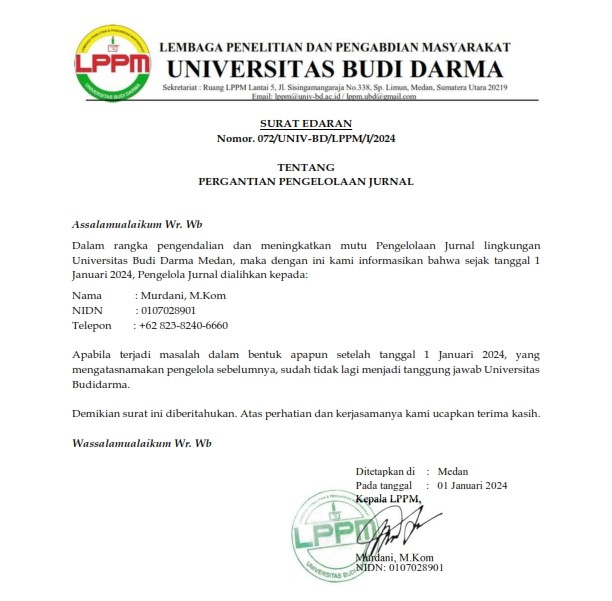Teachable Machine: Real-Time Attendance of Students Based on Open Source System
DOI:
https://doi.org/10.30865/ijics.v6i3.4928Keywords:
Teachable Machine, Face Detect, Machine Learning, Recognition, Open Source, Tensorflow.Js, Convolutional Neural NetworkAbstract
The utilization of open source-based services will be very useful, simplifying and accelerating the process of object recognition and complex computational processes, one of them uses the Teachable Machine service. Identification of student faces in real-time attendance is a case study that will be applied to students to recognize and identify accurately and clearly the presence of students during online / offline lectures, by applying Teachable Machine services that have good algorithms with a machine learning approach that utilizes the Tensorflow.js library where the training data testing uses Convolutional Neural Network (CNN). Of the objects identified, the average accuracy of all classes ranged from 91-100%, with the number of samples for each object class being 23 objects or more. Number of sample images in one class. Clothing, object background and lighting intensity around the image object are also very influential in determining the accuracy value of student face recognition later, so that the use of the tensorflow.js library that implements Convolutional Neural Network (CNN) will be very helpful in facial recognition and influencing factors so that the data entered later needs to be further corrected and improved again, so that the results obtained in implementing the online attendance system have been very helpful in detecting student faces with an average accuracy rate of 91.8%References
T. Teachable Machine, “What is Teachable Machine?,†Teachable Machine, Sep. 03, 2017. https://teachablemachine.withgoogle.com/ (accessed Sep. 26, 2022).
M. Carney et al., “Teachable Machine: Approachable Web-Based Tool for Exploring Machine Learning Classification,†in Extended Abstracts of the 2020 CHI Conference on Human Factors in Computing Systems, Apr. 2020, pp. 1–8. doi: 10.1145/3334480.3382839.
D. Agustian, P. P. G. P. Pertama, P. N. Crisnapati, and P. D. Novayanti, “Implementation of Machine Learning Using Google’s Teachable Machine Based on Android,†in 2021 3rd International Conference on Cybernetics and Intelligent System (ICORIS), Oct. 2021, pp. 1–7. doi: 10.1109/ICORIS52787.2021.9649528.
C. Chazar and M. H. Rafsanjani, “Penerapan Teachable Machine Pada Klasifikasi Machine Learning Untuk Identifikasi Bibit Tanaman,†Prosiding Seminar Nasional Inovasi dan Adopsi Teknologi (INOTEK), vol. 2, no. 1, pp. 32–40, May 2022, doi: 10.35969/inotek.v2i1.207.
Ö. F. ASLANDOĞDU, H. AYDIN, and A. ÇETİNKAYA, “Accuracy Prediction and Analysis of Teachable Machine (TM) Model developed with Tensorflow Javascript on the Cloud: Face Recognition System Implementation,†Uluslararası Yönetim Bilişim Sistemleri ve Bilgisayar Bilimleri Dergisi, vol. 6, no. 1, pp. 66–77, Jun. 2022, doi: 10.33461/uybisbbd.1106753.
P. P. More and M. D. Jaybhaye, “Wear particles recognition through teachable machine,†Industrial Lubrication and Tribology, vol. 74, no. 2, pp. 274–281, Mar. 2022, doi: 10.1108/ILT-11-2021-0438.
U. Dwivedi, “Introducing Children to Machine Learning Through Machine Teaching,†in Interaction Design and Children, Jun. 2021, pp. 641–643. doi: 10.1145/3459990.3463394.
D. Wanyonyi and T. Celik, “Open-Source Face Recognition Frameworks: A Review of the Landscape,†IEEE Access, vol. 10, pp. 50601–50623, 2022, doi: 10.1109/ACCESS.2022.3170037.
T. Baltrusaitis, P. Robinson, and L.-P. Morency, “OpenFace: An open source facial behavior analysis toolkit,†in 2016 IEEE Winter Conference on Applications of Computer Vision (WACV), Mar. 2016, pp. 1–10. doi: 10.1109/WACV.2016.7477553.
E. Sariyanidi, H. Gunes, and A. Cavallaro, “Automatic Analysis of Facial Affect: A Survey of Registration, Representation, and Recognition,†IEEE Trans Pattern Anal Mach Intell, vol. 37, no. 6, pp. 1113–1133, Jun. 2015, doi: 10.1109/TPAMI.2014.2366127.
M. Carney et al., “Teachable Machine: Approachable Web-Based Tool for Exploring Machine Learning Classification,†in Extended Abstracts of the 2020 CHI Conference on Human Factors in Computing Systems, Apr. 2020, pp. 1–8. doi: 10.1145/3334480.3382839.
Y. P. Pujari, D. Prasad, N. Malleswari, and N. Gupta, “Implementation of Machine Learning Based Google Teachable Machine in Early Childhood Education,†International Journal of Early Childhood Special Education, vol. 14, no. 3, pp. 4132–4138, May 2022.
Teachable Machine, “Faq : Diving Deeper,†Teachable Machine, Nov. 08, 2019. https://teachablemachine.withgoogle.com/faq (accessed Oct. 02, 2022).
C. D. Google, “What is TensorFlow.js?,†Codelabs Google, Mar. 31, 2022. https://codelabs.developers.google.com/tensorflowjs-transfer-learning-teachable-machine#1 (accessed Oct. 03, 2022).
C. D. Google, “TensorFlow.js: Make your own ‘Teachable Machine’ using transfer learning with TensorFlow.js,†Codelabs Google, Mar. 31, 2022. https://codelabs.developers.google.com/tensorflowjs-transfer-learning-teachable-machine#2 (accessed Oct. 03, 2022).
M. D. Irawan, Flowchart dan Pseudo-Code: Implementasi Notasi Algoritma dan Pemrograman, 1st ed. Bandung: Media Sains Indonesia, 2022.







